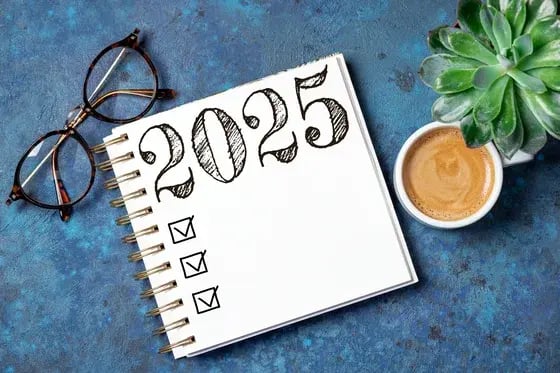 The new year is certain to start off with plenty of uncertainty in the realm of international trade. Before your 2025 calendars fill up, now is a good time to perform a basic compliance review. Here are some suggestions for both exporters and importers:
The new year is certain to start off with plenty of uncertainty in the realm of international trade. Before your 2025 calendars fill up, now is a good time to perform a basic compliance review. Here are some suggestions for both exporters and importers:
2025 Due Diligence Tips for Exporters
Most managers or owners of small and medium-sized companies wear many hats and usually do not have in-house compliance expertise. As a result, major projects—like implementing an Export Compliance Program—go on the back burner. But ignoring compliance is not an option!
Let me suggest a few best practices to help you get started:
Validate Your Export Codes
Scrub your parts list to make sure Harmonized Tariff Schedule (HTS) and Schedule B codes are valid. The tariff schedules change periodically, and we have found obsolete or invalid codes on 100% of clients’ parts lists. Once identified, these codes can be updated and lists maintained.
Understand ECCN and EAR99
Exporters quite often assure me that their commodities are designated EAR99 or No License Required (NLR). While this may be true, due diligence requires verification, which starts with checking to see if your commodities have an Export Control Classification Number (ECCN).
A good place to start is with the Commerce Control List (CCL) to see if your commodities are listed. If your item falls under U.S. Department of Commerce jurisdiction and is not listed on the CCL, it is designated as EAR99. EAR99 items generally consist of low-technology consumer goods and do not require a license in most situations. However, if your proposed export of an EAR99 item is to an embargoed country, to an end user of concern, or in support of a prohibited end use, you may be required to obtain a license. Don’t assume—verify! Automatically using EAR99 or NLR puts you at risk of violation.
Audit AES/EEI Filings
Auditing the filing of your Electronic Export Information (EEI) through the Automated Export System (AES) is a good business practice. Many exporters rely on their freight forwarders to file for them. Exporters should verify that their filings are being audited and keep records on file. As the U.S. Principal Party in Interest (USPPI), you bear responsibility for the accuracy of filings, even if done by a freight forwarder.
Screen for Red Flags
Set up procedures for checking common red flags, including checking denied party lists, entity lists and unverified lists. The Bureau of Industry and Security (BIS) regularly updates these lists on its website.
2025 Due Diligence Tips for Importers
An annual customs review is a good business practice. As part of your due diligence, check to make sure you are taking advantage of regulations that allow importing on a duty-free or preferential basis and engage your customs broker for help. Here are a few basic items for your annual customs review:
Review HTS Classifications
Review updates to the Harmonized Tariff Schedule of the United States (HTSUS) to make sure your codes and descriptions are accurate. Proper classification and valuation of imported goods are the first steps in compliance. If you do nothing else, do this.
Explore Duty Drawback and Chapter 98
Duty drawback is a refund of duties paid on imports that are later exported. As supply chains expand, there may be new opportunities for drawbacks. Recordkeeping is key here.
Additionally, Chapter 98 of the Harmonized Tariff allows duty-free entry of certain categories of goods, like:
- American Goods Returned
- American Goods Repaired or Altered Abroad
- American Components Assembled Abroad
Take Advantage of Trade Agreements
Free trade agreements allow duty-free or reduced duty rates on entries. There are many agreements—like the United States-Mexico-Canada Agreement (USMCA)—in place.
Request Customs Rulings
Consider requesting formal customs rulings for large transactions. This ensures compliance and eliminates uncertainty about imports. Rulings can be requested through the U.S. Customs and Border Protection (CBP) website.
Correct Errors Promptly
When an entry mistake is discovered, it should be corrected through a prior disclosure to CBP. The formal process is called a Post-Entry Amendment/Post Summary Correction. Prior disclosure can help mitigate penalties.
 subscribe to Passages: The International Trade Blog. You’ll get the latest news and tips for exporters and importers delivered right to your inbox.
subscribe to Passages: The International Trade Blog. You’ll get the latest news and tips for exporters and importers delivered right to your inbox.
